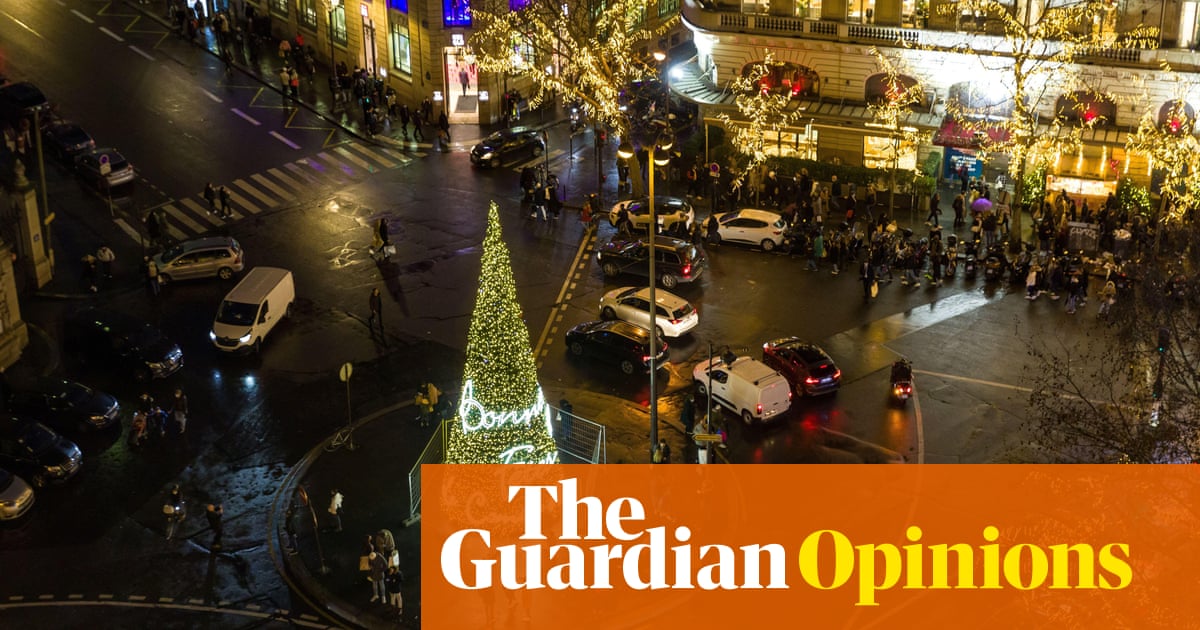
When I was a kid, my favourite part of December was going to get a Christmas tree. Cleveland was always snowy by then, and so we usually had to scrape the ice off the car before going to a tree lot where I would wander through rows of trees – Douglas firs, balsam firs, Virginia pines, blue spruce. After a short family conference in the cold (I pushed for the tallest one possible, my mom cared about that classic “Christmas tree smell” and my dad, in a way that I’m sure every dad will nod along with in agreement, kept me realistic about the price), we would agree on a tree, strap it to the roof of the car and go home to string up lights and ornaments.
We would leave the tree up until early January, then when the branches were sagging and dry, we would paint their ends with peanut butter and seeds, and lay the tree out in the backyard to act as a giant bird feeder (and then, eventually, compost it).
In my early 20s, I lived in Strasbourg to learn French. I also learned that the first Christmas trees in the written record were Alsatian – nine fir trees were procured to hang from the ceilings of nine churches in Strasbourg in 1492, and more trees were recorded in Sélestat in 1521.
I thought about this – the Christmas trees of my childhood, and the Franco-Alsatian origins of the tradition – earlier this month as I wrestled a tree down half a dozen Paris city blocks and then up a few flights of narrow winding stairs to my apartment.
I had splurged, and got one tall enough to remind me of the trees we decorated and sat in front of in the 1990s. Maybe in an unconscious head-nod to the early trees – which were communal affairs hung in churches and gathering places, rather than in private homes – I did it to share with friends who came over for raclette and vin chaud.
As I was lugging the tree up the stairs, another thought struck me: for those of us who live in cities, the act of bringing a tree into a home says something about our need for connection with nature, as well as with each other.
Some will read that and think it’s hypocritical – but actually, the ecology of the “real” Christmas tree isn’t necessarily negative; tree farms serve as temporary carbon sinks (only about 10% of trees are harvested each year), support biodiversity and breeding habitats for birds and can offer farmers an economic incentive to keep large swathes of land undeveloped. And cities such as Paris compost trees left in collection areas (which makes parks smell like Christmas well into March and April).
In its origin, the Christmas tree was a symbol to a largely illiterate population of the Garden of Eden and the reconciliation to come between a fallen humanity and the divine. Or perhaps, looking back from our modern context, between a fallen humanity and nature. (And you don’t have to be a Christian to note that global Christianity might consider reconciling with its own arguably ecologist origins.)
When I was six years old, I yearned to tell my childhood friends what my parents (who were far more committed to the religious holiday than its secular incarnation) had told me: that Santa Claus was just a tool of capitalism run amok, meant to twist us into buying unnecessary stuff. I never did, though, because they made me promise to respect other families’ traditions.
There is a side to “commercial Christmas” that has taken us away from each other rather than brought us together.
The tree, though, isn’t that. It’s something we do as an expression of joy, and maybe unknowingly, as a reaching back to something we’ve lost and need to find again. And that is deeply, deeply OK.
Alexander Hurst is a Guardian Europe columnist












